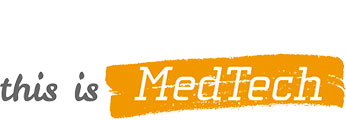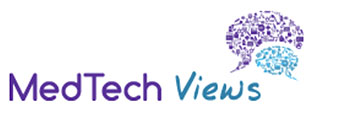MedTech Europe Position on the Proposal for A REACH Universal PFAS Restriction
MedTech Europe shares the ambition of the EU Chemicals Strategy for Sustainability to boost innovation for chemicals that are both safe and sustainable by design. The sector is committed to the highest standards of chemicals risk management measures and is working with its suppliers to continuously improve the performance of its products and processes. At the same time, the medtech sector is ensuring the timely availability of lifesaving and life-sustaining technologies to satisfy patients’ health needs. Medical technologies are regulated under stringent sectoral legislation, i.e., Regulation (EU) 2017/745 on Medical Devices (MDs) and Regulation (EU) 2017/746 on In-Vitro Diagnostics (IVDs), which has been adopted after enacting the EU REACH Regulation 1907/2006. These sector specific regulations lay down requirements for the design, safety, quality, performance, alternatives assessment and validation of MDs and IVDs, which are processes that require a significant amount of time and R&D, in addition to the continuous search for alternatives for chemicals proposed for phase-out at EU level. The proposed EU REACH Restriction of per- and polyfluoralkyl substances (PFAS) is one such example. In addition, the PFAS Restriction proposal is of unprecedented scale not only in terms of number of substances in scope, but also their varied physical, chemical and hazardous properties, and the amount of essential medical technologies impacted.
PFAS uses in the medical technology sector or its supply chain occur due to their combination of different and essential properties including chemical resistance, heat resistance, durability, lubricity, low dielectric constant and/or biocompatibility. PFAS substances play a key role in achieving the required high performance and durability of the technologies critical to precision and reliability of medical applications, especially in the light of the above mentioned sectoral legislation.
Given the need for such a combination of essential properties, there is often no alternative available to the use of PFAS in many medical technologies, their (sterile) packaging or upstream manufacturing processes. Often, the only proposed alternative is another type of PFAS. In addition, any alternative must also fulfil all other regulatory requirements for use in medical technologies, including, required validations, aging tests, change of tooling and production processes, biocompatibility tests, clinical trials for certain devices, regulatory approvals and registrations, according to sector specific legislation (i.e., MDR and IVDR). Without successful completion of such required regulatory assessments and the necessary time to carry them out, a potential alternative material is neither able nor allowed to replace a given PFAS for use in MDs or IVDs.
Consequently, MedTech Europe’s primary preoccupation with the unique PFAS Restriction proposal in terms of its enormeously vast scope combined with tight timelines is geared towards preventing any supply shortages of medical technologies to the detriment of millions of patients when considering a gradual transition to PFAS-free alternatives wherever technically feasible, MDR/IVDR proof and capable of ensuring the intended purpose of the medical technology to the continued benefit of patients.
The current PFAS Restriction proposal would result in significant impacts on the quality and availability of treatments for patients in the EU. Due to the unavailability of suitable alternatives to PFAS some products would have to be removed from the market. Certain diseases and conditions could no longer be treated at all or no longer be adequately treated, such as for example, by devices required for minimally invasive interventions. If these devices disappeared, the alternative options would be open, maximally invasive surgeries, which vulnerable patients often cannot undergo or do not survive. For certain patients, there are no alternatives to interventional procedures with subsequent impact on their lives.
Companies have been working with their suppliers to map PFAS uses in medical technologies and continue to find further use cases as time goes on. Due to the sheer number of substances in scope of the Restriction proposal and highly complex multitiered healthcare supply chains sometimes involving thousands of suppliers, there is the high risk that uses of PFAS that have not been identified by the end of the ECHA consultation period would fall outside the scope of derogations and would therefore not be permitted for use.
Finally, the medical technology sector is constantly looking for ways to innovate state-of-the-art technologies. PFAS offer many benefits in medical technologies, due to the unique combination of properties they offer in a single material. The Restriction of this entire class of substances risks halting future medical technology innovation. Industry needs clarity and legal certainty regarding research priorities for alternative substances, since the discovery of viable alternatives to the thousands of different PFAS substances, cannot be accomplished and incorporated into medical technologies at the same time.
For the way forward with the PFAS Restriction proposal, MedTech Europe recommends:
- An overall patient-centric approach whereby patient safety needs are considered when transitioning away from PFAS (where technically and economically feasible).
- A realistic transition pathway to non-PFAS alternatives that are reliable and feasible for medical technologies (including their manufacturing and supply chain) to avoid shortages of medical technologies for patients and practitioners. Sufficiently broad derogations should allow sufficient time to first identify all PFAS uses in medical technologies, and to subsequently move to alternatives where these are proven to be technically viable, available and in conformity with the sector specific MD and IVD Regulations as well as fit for the intended purposes of the medical technology. A realistic timeline must consider the sector’s complex supply chain dependencies as well as the long development timelines and steps to ensure compliance with the sectorial legislation (please see MedTech Europe response to ECHA consultation).
- A differentiated approach to high risk and low risk PFAS in line with Article 68.1 REACH, which requires a proof of “unacceptable risk” for enacting a REACH Restriction: high risk PFAS should be targeted first. Fluoropolymers have a proven history of use and safety in medical technology applications and differ distinctly from the broader PFAS group. They should therefore be subject to a more flexible approach including an at least 13.5 year derogation and transitional period in medical technology applications and a review possibility for its prolongation where duly justified.
- A safeguard mechanism for cases where no alternatives will be available, and for newly identified non-derogated cases or potentially missed use cases to ensure quality and continued access to essential medical technologies containing PFAS or requiring PFAS for their manufacturing, as well as their upstream supply chain.
- An inclusion of upstream suppliers and manufacturing in medtech derogations: Where medical devices and IVDs are granted the necessary derogations, these need to include the materials and components supplied to the medtech sector as well as manufacturing processes and process aids to be workable.
- An enabling R&D framework that supports medical technology manufacturers in the unprecedented challenge of finding numerous use-specific, fit-for-purpose alternatives to PFAS medtech applications that are also satisfying MDR/IVDR regulatory requirements without compromising patients’ lives or health.
Find the full position paper below.
Posted on 11.10.2023


